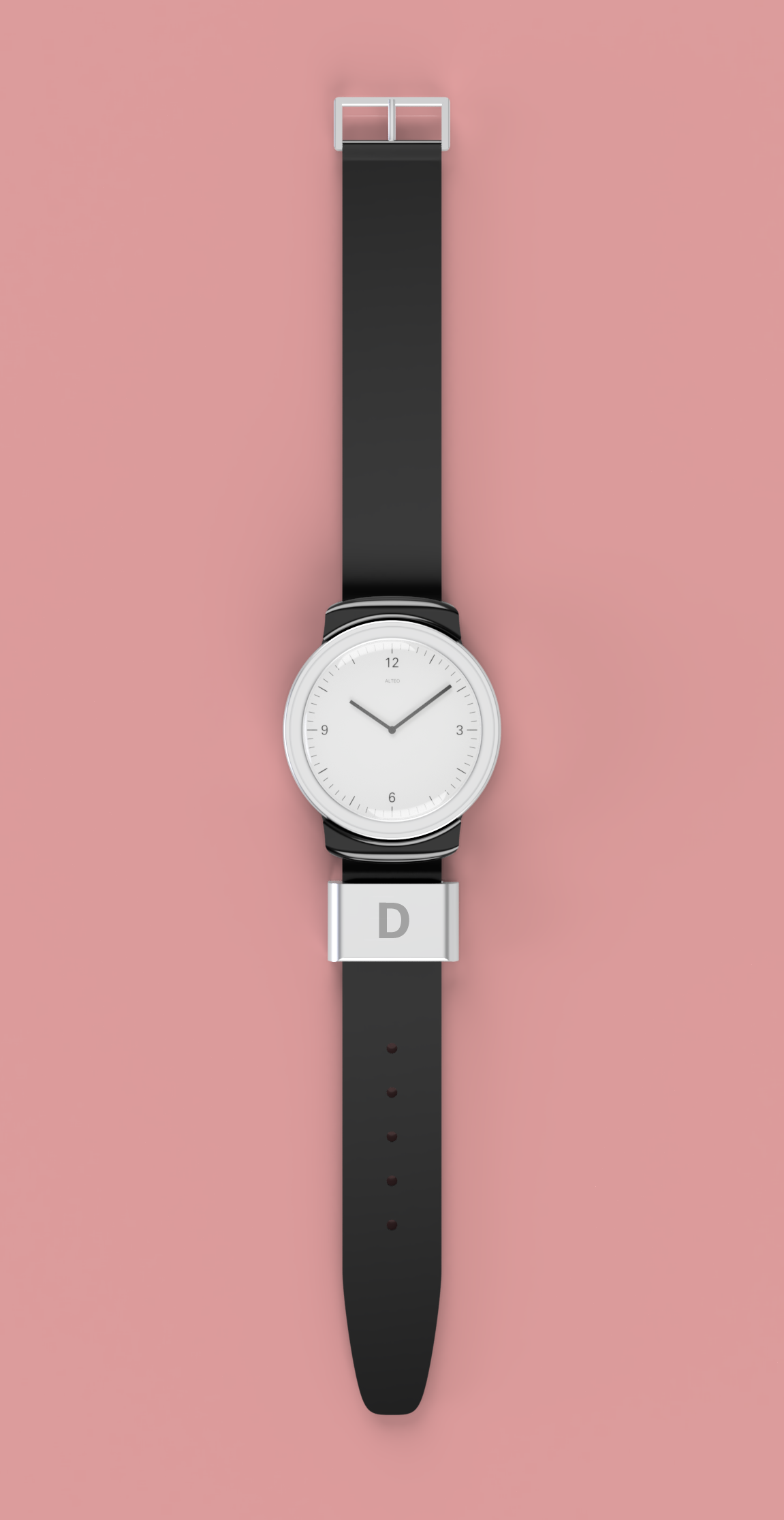Alteo


In case of a medical emergency getting help as fast as possible is very important. That's why people at high risk of getting in one, like the elderly or people with preexisting medical conditions often wear an emergency button in them to call help with just the push of a button. The System behind the device has been tested and used since the 1980s and hasn't changed much since then. The device is usually made out of cheap, easy-to-clean material, common for medical devices but maybe not the best for a device you wear for hopefully many years every day. The existing design stigmatizes the user as a person in need of assistance.
With Alteo I tried to create a device more “invisible”, while also making it more functional in case of an emergency. Alteo mostly functions as a normal watch. Most other functions are hidden. The Emergency signal can be sent by pressing down the glass cover the watch face. Also, the actual watch/button module can be taken of the strap, allowing it to be worn as a necklace or placed on the wall, for example in the shower. Sensors can monitor the user's vitals and send them the data to a smartphone. A clip is attached to the wristband to quickly inform paramedics about chronic diseases like diabetes or epilepsy, speeding up the process to get help.
2018
Pratt Institute, New York
Instructor: Ignacio Urbina Polo
